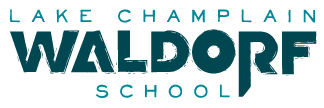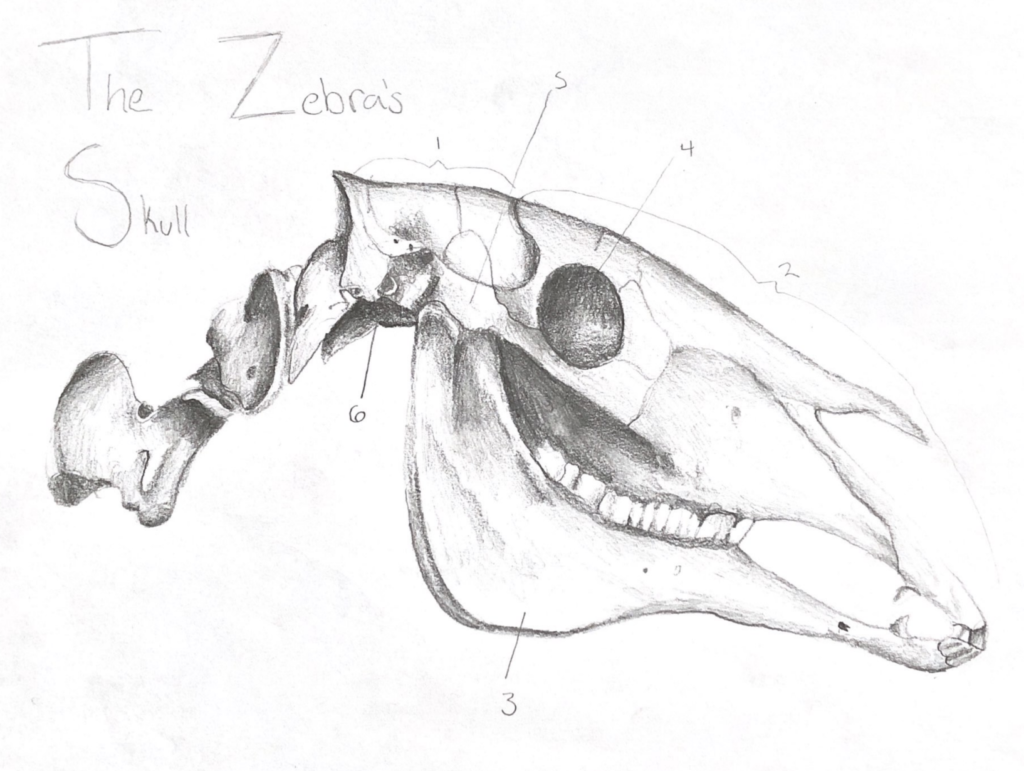In this month-long lesson, we examine the human being through the lens of the skeletal system, and its relationship to the other systems of the body. We begin with the study of human development and move on to comparative anatomy with other mammals. We conclude with a study of the senses and how they interrelate.
By studying the behavior along with the skeletal structure of other animals, we discover how an animal’s skeletal system supports that behavior, which is a challenging exercise in thinking. We find endurance and speed in the zebra and flexibility and stealth in the lion. We also discuss the trade-offs for each skeletal system, which for lion and zebra are opposites. We find the advantages of a zebra’s columnar limb structure in our human legs in our ability to stand for long periods. We find a lion’s flexibility in our own arms and hands. Thus, we don’t just know about these animals, we come to know them within ourselves.
From there, we look at the human being and see that uprightness allows the freedom to make tools and conscious decisions. The tradeoff, of course, is that we can make the wrong decisions as well as the right decisions—we have a choice and that is a big responsibility. We form a relationship with these experiences physically, emotionally, and intellectually, and find meaning that changes us and our understanding of the world.
Course requirements include class discussion, written compositions, and anatomical drawings. Drawings must be precisely and carefully drawn using pencil and are expected to be done freehand, not traced. Bones must be numbered and labeled on your drawings.
Sample Assignments:
SORT MYSTERY SKULLS
Explore three different ways to sort the 15 skulls in photos below, including the human skull. Then choose one of these ways to actually sort them and put them in that order by number. For each skull, describe what this animal uses its jaws for and how you know. I can provide a closer look at any skull if you have one in particular that you want to see. Pick a few mystery skulls and make your guess as to what animals they are.
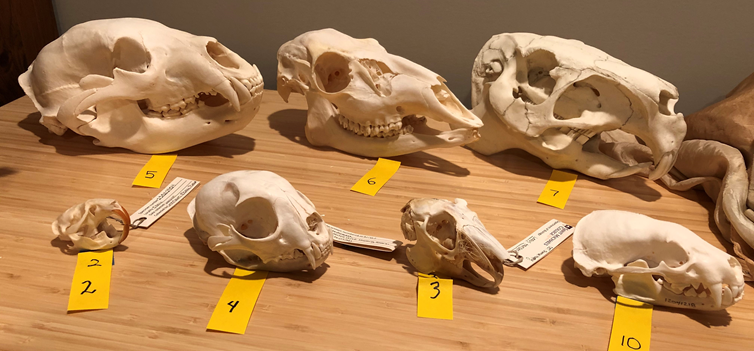
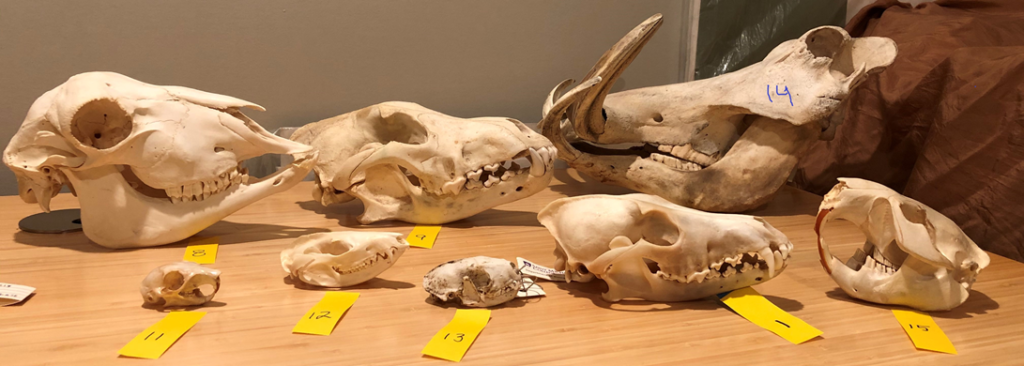
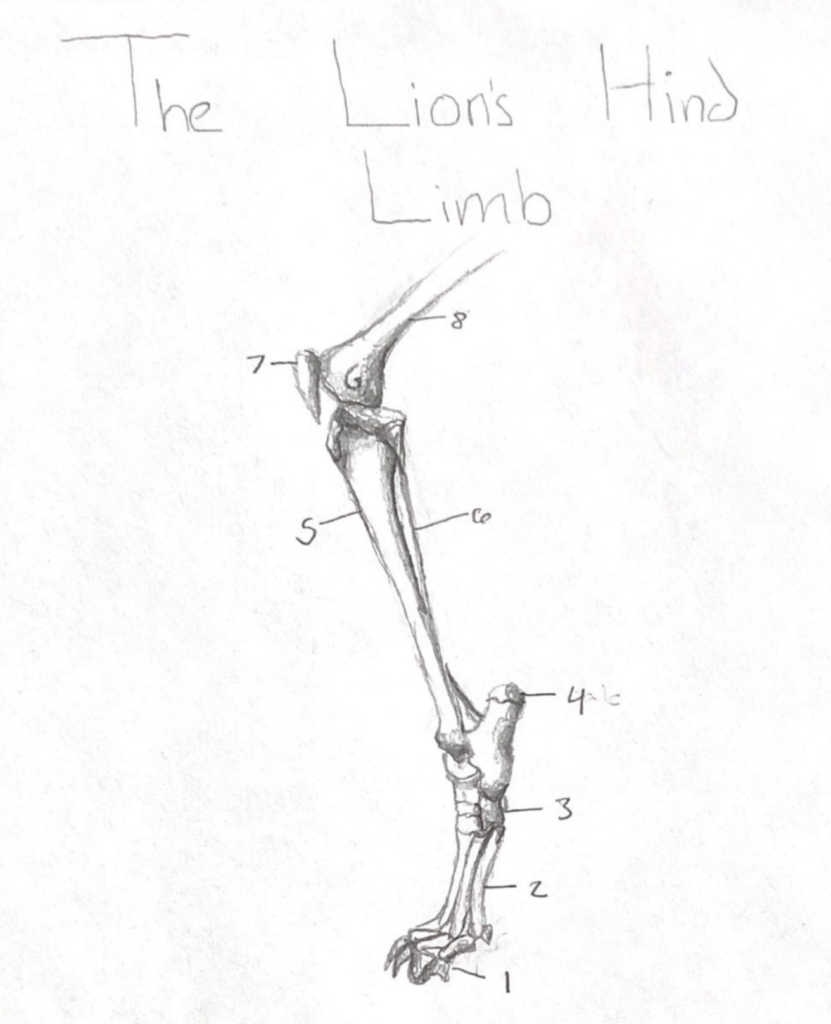
ANATOMICAL DRAWINGS
Lion or Zebra Limbs
1) Do a drawing of the front lower limb of either lion or zebra; only draw what appears below or at the body line
2) Do a drawing of the hind lower limb of whichever animal you chose above.
3) Make a label page, titled ‘Labels’ for front and Hind Limbs.
Drawings should be on separate pages and should fill the page from top to bottom leaving a margin and title at the top (1.5-2 inches) and a margin on the bottom (1 inch approximately)
Use a ruler to draw a line to each bone and number them. Do not put labels on the drawings.
Lion or Zebra Skull
Please draw either lion or zebra skull. Turn your paper to landscape orientation and fill most of the page. Make sure you include a title. Use a separate page for labels.
COMPOSITION ASSIGNMENT
Write an essay comparing the fetal human skull to the adult human skull. Your essay should include the following:
1. Introduction
2. Neurocranium (make sure you include detailed description)
a. What is the overall shape of the newborn neurocranium?
b. Describe how its shape changes as we grow.
i. Include changes in the overall shape and size
ii. You should include the circumference changes that I gave in class
iii. Include the bone development and changes in the spaces between the bones
iv. What are the advantages of starting out less developed?
3. Facial cranium (make sure you include detailed description)
a. In newborn, what is the shape of the facial cranium?
b. Describe how its shape changes as we grow?
c. When does it change the most? This relates to when the other limbs also grow
i. You should use the volume changes that I gave you in class
4. How is the neurocranium development different from the facial cranium in terms of timing and amount of change?
5. Conclusion
Sample Student Essay:
Comparison of the Fetal Human Skull to the Adult Human Skull
Learn more about our admissions process, and contact our admissions office if you have any questions.

